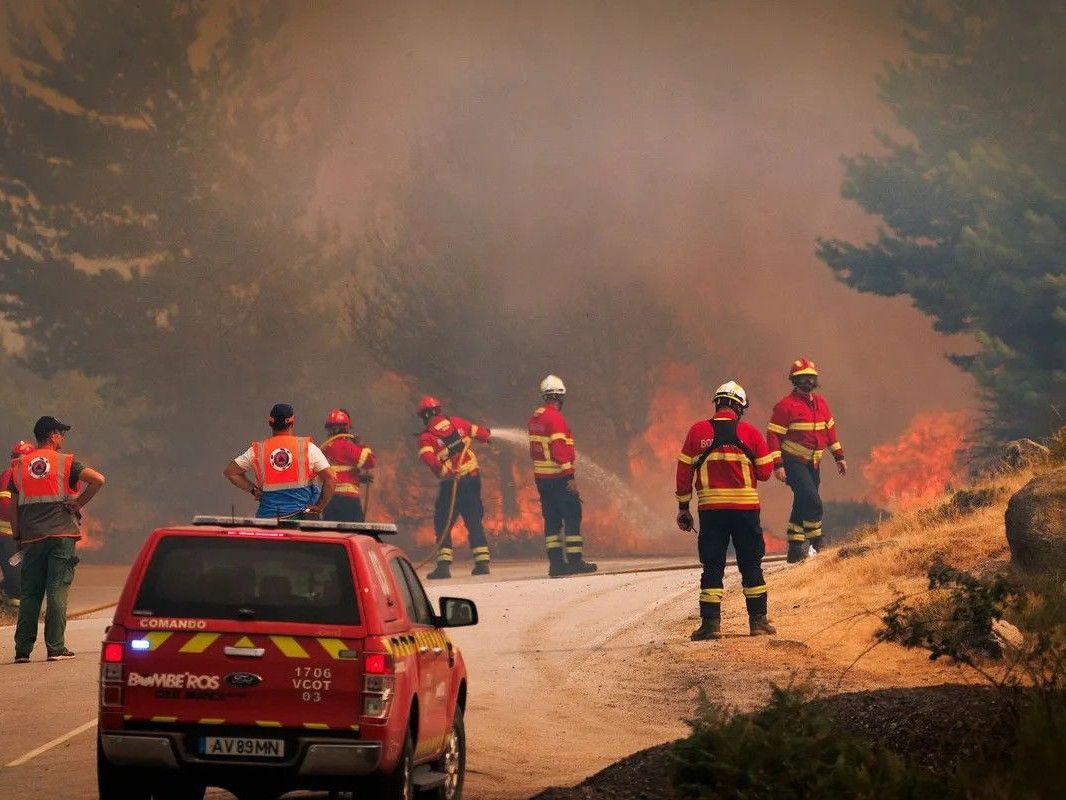“Coordination failures between different forces delay response time to fires and increase their spread. The creation of forest firefighting forces in Portugal reinforced the rapid response to fires in forest areas. However, it also contributed to unclear command structures between civil protection, volunteer, and forest firefighting forces,” concludes the Organisation for Economic Co-operation and Development (OECD) in the report “Towards Integrated Management of Rural Fires in Portugal,” which Lusa had access to.
The preliminary conclusions of this project, funded by the European Union and carried out in collaboration with the Agency for Integrated Rural Fire Management (AGIF), were presented by OECD technicians to Portuguese members of parliament in the Assembly of the Republic.
“Coordination challenges”
The report reveals the existence of “coordination challenges” when specialized teams from the Institute for Nature Conservation and Forests (ICNF) and civil protection forces have to operate together, despite the National Emergency and Civil Protection Authority (ANEPC) having command authority.
“These coordination gaps are further amplified at the local level, where volunteer firefighters and other suppression actors (e.g., municipal firefighters and the GNR) do not consistently follow the hierarchical chain of command of ANEPC, which can lead to fragmented mobilizations, slower response times, and less efficient allocation of resources on the ground,” it states, emphasising that “this lack of clarity has posed challenges to the operational management of fires in 2024.”
According to the OECD, these situations reflect delays in the mobilization of specialized forces and an unclear operational chain of command during the initial attack and pre-suppression phases (operations that occur after the fire has been declared extinguished) due to the diversity of stakeholders involved.
“As a result, resources were allocated late or insufficiently in a context of multiple and complex fires,” the experts concluded.
OECD experts say that Portugal initiated a series of reforms to improve fire management after 2017 with the creation of the Integrated Rural Fire Management System (SGIFR), but they indicate, the fires of 2024 and 2025 revealed that “they could have been further contained if actions under the SGIFR had been accelerated.”
According to this organisation, the introduction of the SGIFR (Integrated System for Forest Fire Management) improved the institutional, regulatory, and financial conditions for forest fire management, clarified responsibilities at the national, regional, and municipal levels in terms of prevention and response, created AGIF (Agency for Forest Fire Management) to coordinate all actors involved, and developed a unified strategy.
After 2017, new incentives were created to promote controlled burning and strategic fuel mosaics to reduce fire risk, with public funding for management doubling, and prevention now representing almost half of the total fire-related expenses.
“However, the extent of the damage caused by the 2024/2025 forest fires points to the need to accelerate the implementation of reforms. In 2024, 35 fires burned more than 500 hectares, representing 84% of the total area burned annually, and the summer of 2025 again saw fires of exceptional dimensions, exceeding the area burned by the fires that triggered reforms in Portugal in 2017,” states the OECD, stressing that these fires revealed “several shortcomings.”
In addition to “coordination failures,” the OECD points to some shortcomings in terms of prevention, such as “a high number of man-made fires,” persistent gaps in meeting fuel management targets, and local disputes over fire risk and hazard maps.
“This delays the adoption of municipal plans for implementing fire management measures, which are essential for obtaining funding and implementing fire regulations,” the document emphasizes, also lamenting that “there is no systematic record of losses and damages caused by forest fires.”
For the country to create “a stronger institutional framework,” the OECD recommends clarifying the roles and command structures among firefighters and strengthening their capacity.
The organization also proposes the development of “a long-term financing strategy for forest fires, in order to increase the efficiency of expenditure on forest fire management.”















